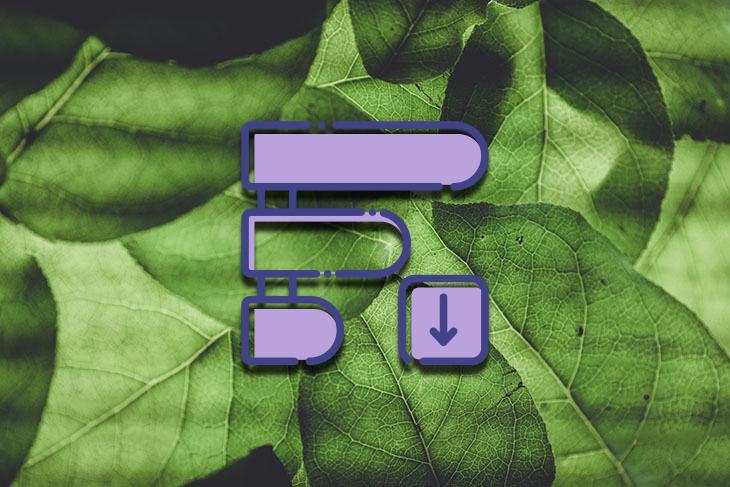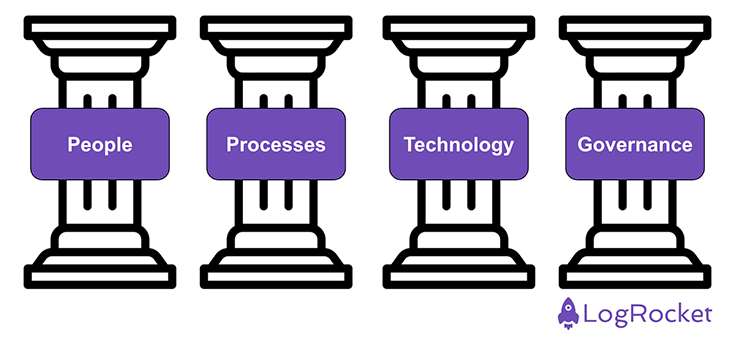Imagine you place an order through Amazon. When you receive the order, it’ll either be delivered by Amazon or by another courier. Behind the scenes is a whole host of processes and logistics that help get your order delivered to your doorstep. This is a great example of business process management.

In this article, we’ll look into what business process management is, its pillars, its benefits, and how its lifecycle works.
Business process management, or BPM, is a systematic approach that focuses on improving the efficiency, effectiveness, and agility of business processes. It is a methodology to model, execute, manage, monitor, control, and continuously improve business processes.
There are many examples of how BPM helps create and ensure efficient operations. Some common ones include:
BPM requires a holistic view of interdependent processes, the people involved and their authorities, the technology, and the boundaries of operations within a business. BPM involves various activities, starting from analyzing and modeling processes to deploying, monitoring, and controlling them.
As a discipline, BPM cannot be implemented and closed in one go. It takes time, multiple iterations, effort, commitment, and continuous practice to implement it successfully.
There are four pillars of BPM: people, process, technology, and governance. Enabling them with the right approach will help build scalable, reliable, and efficient business processes:

You cannot sell a product or service to a system. Your customers are people and your employees are people. Hence, people are the most important pillar of any business process you deploy and require the right set of tools:
BPM is all about managing and improving business processes. In general, a process is a set of activities that has to be carried out sequentially or in parallel to achieve its desired outcomes.
A process can be as simple as having one or more activities, or can be complex enough to have multiple sub-processes. You should enable the process by:
Business processes involve many activities that need data, instructions, and repetitive activities. There is also a need for setting priorities, collaboration, and decision-making at times.
Technology is an essential pillar of BPM because it enables more efficient work. You should embrace digital transformation in your business processes and:
You might come across people quoting a fourth pillar of BPM: governance. It might not always be explicitly mentioned as a pillar, but strong governance will help BPM align and achieve the business’s strategic goals.
All put together, a BPM equates to skilled people, efficient processes, reliable technology, and strong governance.
Efficiently managing and improving business processes will yield many benefits to the business, we’ll go over a handful below!
This is one of the biggest benefits to businesses when they implement BPM. BPM brings in elasticity while scaling systems. Businesses can increase their load just by increasing the capacity of systems!
Let’s use an ecommerce example. An operations team sorts and routes orders to their next destination. This team can do 20,000 orders per day. On any day, if orders increase to 25,000, this team has to put more people in place. But, if they deploy BPM, the automated systems will handle the scale.
Think of the example above where the operations team sorts and routes 20,000 orders per day. If humans are doing it, there’s always a chance of error — and unexpected ones at that!
When systems do it, the chance of errors is drastically reduced and the results are always consistent and expected. If one system goes down, the other will continue to operate and produce results.
Think of the same above example again where the operations team sorts and routes 20,000 orders a day. In the traditional approach, people have to be scaled along with increased demand, which, in turn, adds cost.
With BPM, the increased demand is carried with the same or lower costs compared to deploying manpower and training and managing it. All other things constant, BPM will yield lowered expenses compared to a traditional approach.
With BPM, the consistency in operations will reduce the error rates dramatically. This creates better customer experiences and less frustration, which will help businesses retain customers.
BPM builds completely visible operations that help in monitoring, tracking, and tracing any events or transactions accurately. Say a supervisor wants to know orders routed in the last four hours or orders that have wrong addresses. They can do it from their location and all the data would be available for them via the centralized dashboard(s).
BPM also builds visibility in compliance or policies. If an organization follows certain compliances such as ISO, BPM makes it easier to audit information. Management can evaluate whether the process meets its regulatory satisfaction and is compliant.
Think of the activities involved from two different teams in this e-commerce example — sorting and packing. Upon completion of sorting, there should be instructions for the packing. But what if the sorting team fails to communicate with the packing team? The entire bag would reach the wrong destination.
With BPM, the communication between teams, departments, external vendors, or any stakeholders is taken care of in the system. This maximizes error-free collaboration where communication, instructions, and actions are passed by the system to the operator.
BPM allows you to organize, orchestrate, and control. Say an employee resigned and is leaving the organization. You can track communication from department heads, the status of any necessary approvals, etc. BPM lets you strategically align process activities and orchestrate the sequence.
When two departments communicate, there may be unclear instructions, unknown responsibilities, or an unstructured approach. All of these factors will lead to employee unhappiness.
BPM produces a clear set of instructions or actions for employees operating in this environment.
These instructions set clear boundaries of operations, define responsibilities, and increase visibility. Frustration is curbed, resulting in higher productivity and employee satisfaction.
Risks are unavoidable and often unforeseen. In a human-operated environment, the probability of risk occurrence is understandably higher.
Take the e-commerce example — what if two of the employees in the operations team fall sick and are unavailable? The chance of meeting output for the day is much lower. What if the organizational factors change? A contract from a seller is terminated but there are 5,000 orders left for the operations team.
BPM can reduce the chances of foreseen risk. It automates most of the tasks in a process, helping businesses reduce dependency on humans and the environment. Managers can use data outputs from the BPM tool to anticipate risks and mitigate them. They can also analyze inefficiencies in systems and processes and improvise to reduce risks further.
When it comes to the life cycle of business process management, there can be many variations and each organization would define its life cycle based on its culture (people), operations, actual processes, and business goals. But, all the BPMs follow a common cycle with little variations:

A highly optimized BPM process goes through the following life cycle:

Process identification is the first stage of the BPM life cycle. In this step, you’ll look at the organization-wide processes that are in action and ask:
Process discovery is a major activity that has to be carried out in the entire BPM development process. This step answers the following questions:
Collecting every piece of information in the current process involves interviewing, discussing, and engaging in the process and recording every piece of information. The goal is to understand every bit of the process so it can fuel the next stage.
Now that you have gathered all the knowledge and artifacts of the current process, the next step is to analyze the current process for inefficiencies and gaps. Here, process analysts should answer the following questions:
The goal is to come up with a detailed analysis of the current process to fuel re-designing and implementing it.
In most environments, building one thing risks breaking another. You have to analyze not only the issues but also the resolution— discussing them with employees and evaluating other dependent systems. Gather as much as information to rule out the negative impacts that your resolution can have. There should be a feasibility study after your analysis to help with decision-making.
There are often dependencies on vendors, suppliers, customers, or other external stakeholders, and changing your process could break their current process. Your analysis has to cover these dependencies too. It’s always better to aim for minimal effects on your stakeholders, and you should try to engage them in your analysis.
Process redesign, as the name explains, redesigns the current process. You will re-model the current process solving redundancies, issues, gaps, bottlenecks, and inefficiencies analyzed and identified during your analysis. The outcomes of this stage in the life cycle are a visual representation of a new process as well as clear documentation for how to implement it and how each issue is being addressed.
When you redesign a process, you can do it in either of two ways:
We all know that nobody likes change. You have to consider this too. Communicate and engage with employees, helping them understand the new design and share their feedback.
Process implementation is the execution part of the life cycle! The outcomes in this stage are:
The goal of this step of the BPM life cycle is to deliver the new process models and operate on every node of the value chain. You must be extremely communicative and collaborative between implementation teams, users, management, customers, and other stakeholders.
This phase involves tracking, tracing, analyzing, and controlling the processes, systems, tools, and operations. In this phase:
This is a phase where a lot of decision-making happens at the implementation, process, and organization levels. An organization can decide to discard the new process if there are no positive outcomes for the cost.
Process owners may see further changes and decide to move back to stage one. At an implementation level, a tool might be replaced, a team might be removed, etc. Process owners and other stakeholders need to collect as many metrics as possible and generate the right insights.
We discussed the pillars of BPM — people, process, technology, and governance. A business process can deploy without any tools, but using tools and software really helps.
We will not discuss any BPM tools available in detail here, but let’s list some of the popular tools that you can adapt to your organization:
Some of the above also offer their free (community) versions to use. With that, let’s also list a few popularly used, open-source BPM tools:
When picking tools, it’s important to consider factors about your own organization, including size, hierarchy, budgets, and more.
Business process management is a discipline of analyzing, modeling, implementing, monitoring, controlling, and continuously improving business processes.
BPM helps businesses identify gaps, errors, and inefficiencies in their process and rectify them. It also helps improve the process, resulting in reduced costs, faster responses, and customer happiness.
Featured image source: IconScout

LogRocket identifies friction points in the user experience so you can make informed decisions about product and design changes that must happen to hit your goals.
With LogRocket, you can understand the scope of the issues affecting your product and prioritize the changes that need to be made. LogRocket simplifies workflows by allowing Engineering, Product, UX, and Design teams to work from the same data as you, eliminating any confusion about what needs to be done.
Get your teams on the same page — try LogRocket today.

A practical five minute revenue estimation method to help product managers compare ideas, drop low impact features, and prioritize smarter.

A practical guide for PMs who want to stop being bottlenecks, delegate smarter, and lead teams effectively with a clear ownership framework.

Stop letting unreliable data block features. Treat data as inventory to track quality, ownership, and ship with confidence.

Learn why slide decks slow teams down and explore better tools like whiteboards, PRDs, and prototypes to improve collaboration and alignment.